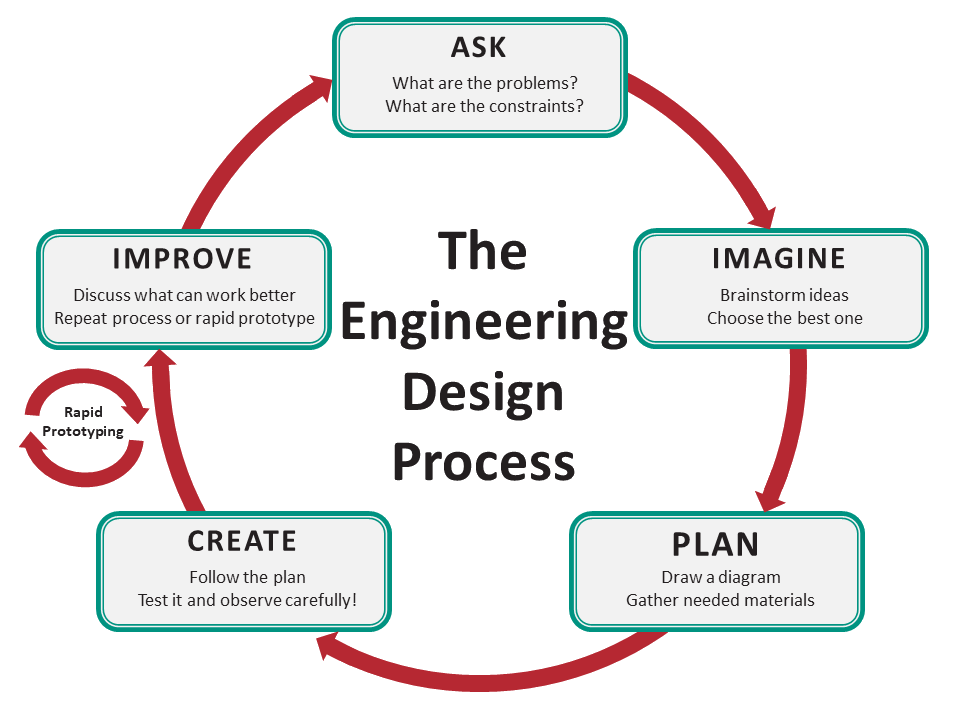- Author:
- Carrie Robledo, Matthew Michel
- Subject:
- Career Technical Education
- Material Type:
- Activity/Lab
- Level:
- High School
- Tags:
- License:
- Creative Commons Attribution Non-Commercial Share Alike
- Language:
- English
Education Standards
History and Physics of Rocketry

Overview
Part 1 - History of Rocketry: Students will explore the history of rocketry, starting with early Chinese gunpowder and progressing through the manned space programs of the 20th century. Following the initial lecture, students are divided into groups of 2 or 3 to research one of the United States manned space programs. Students will then present these programs to the class.
Part 2 - Rocket Science: Students will be exposed to the foundational physical principles involved in rocket flight. Newton’s laws will be reinforced. After the initial lecture, students will be divided into groups of 2 or 3 to build a model rocket. Rockets are then launched as a class, students will calculate the maximum height of the flight using trigonometry
Instructor Directions
History and Physics of Rocketry
Submitted by Matthew Michel
Avery County Public Schools
| Driving Question / Scenario | What is Rocket Science? What role has the engineering design process played in the development of our space program? |
| Project Summary | Part 1 - History of Rocketry: Students will explore the history of rocketry, starting with early Chinese gunpowder and progressing through the manned space programs of the 20th century. Following the initial lecture, students are divided into groups of 2 or 3 to research one of the United States manned space programs. Students will then present these programs to the class.Part 2 - Rocket Science: Students will be exposed to the foundational physical principles involved in rocket flight. Newton’s laws will be reinforced. After the initial lecture, students will be divided into groups of 2 or 3 to build a model rocket. Rockets are then launched as a class, students will calculate the maximum height of the flight using trigonometry. |
| Estimated Time | Part 1 - 3 Days (4.5 Hours)Part 2 - 4 Days (6 Hours) |
| Materials / Resources | Estes Firestreak SST Bulk Pack - 1 rocket per group (may be bought in bulk packs of 12)Estes 1/2A3-4T Rocket Engine Bulk Pack - 1 Engine per group (needs to be bought in kit with recovery wadding, ignitor, plug and rocket engine)Estes launch pad - 1 for whole groupSuper GlueBatteries - Batteries are required for Estes launch pad controllerEstes Altitude Tracker |
| Grade | 9-12 |
| Subject(s) | Technology and Engineering Design |
| Educational Standards | 1.00 Understand that most inventions and innovations are the result of an evolutionary process, 1.01 Understand that most inventions and innovations are the result of an evolutionary design process. 2.01 Analyze the historic significance and interaction of technological advancements within society and the environment. 4.01 Apply design principles when generating solutions to problems. |
| Classifying Objective | Students will explore the history and physics of rocketry. This will culminate in a hands on lab where students will build their own rockets and use trigonometry to calculate altitude. |
| Project Outline | |
| Ask | Part 1 - How has the manned space program shaped our world and country today? What historical advancements were necessary for these tremendous scientific achievements?Part 2 - What physical forces are present during the flight of a rocket? How does a rocket really work? What mathematical principles and equations govern a rocket’s flight? How can we calculate these values? |
| Imagine | Imagine you are a NASA scientist working in the space program. What physical principles govern the flight of your rocket? How can we calculate these values in order to accurately predict how the rocket will behave? |
| Plan | Tell the students about the project and let them research model rocketry. |
| Create | Part 1 - Have students research the four major space programs in NASA’s history, students will create a slideshow using powerpoint or google slides and the present to the class.Part 2 - Hand out Estes rocket kits and building tools to all groups. Students will follow directions provided in the kit to create their own rocket. The instructor should ensure that the rocket is built properly to ensure safety on launch day! Students will load a rocket engine into their craft only when it is their turn to fly. The instructor will help the students set up the launch system to ensure safety.Prior to flight, provide 1-2 students with an altimeter. Students will use the altimeter to find the angle at the peak of the rocket’s trajectory, making sure that the distance from the launchpad to the altimeter is known. |
| Improve | Return to the classroom and open class discussion in relation to the lab. Walk students through Part 3 of the lab report, showing how to calculate the rocket’s altitude using the altimeter (trigonometry). Part 3 will calculate the altitude using the average from class values. Students are then released to work through part 4 and calculate the same values for their specific flight. |
| Closure / Student Reflections | In part 5, students will explore the naming schemes for rocket engines and potential sources of error that contributed to their lab results. This can be done in small groups or together as a class. |
| Possible Modifications / Extensions | Movies and documentaries are an excellent addition to this lesson. Apollo 13, The Right Stuff and October Sky are all excellent options. I have included a worksheet for students to follow along with Apollo 13 if that is the movie chosen.If funds are scarce, model rockets can be fashioned from ordinary scrap workshop materials. Additionally, a single rocket can be prepared by the instructor and the entire class can work through all measurements and math from the flight together.Students can also integrate this lab with an art class, with prizes being awarded for the best rocket design (as voted on by students).If working with advanced students, the altitude of the rocket can be calculated using the kinematic equations, the only measurement needed to solve this problem is total flight time. |

